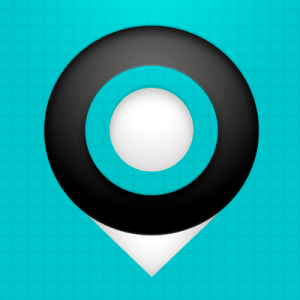
Agriculture
August 13, 2024
DuraSan Latrine
Read SolutionImplemented by
Sanitation Solutions Group

Updated on August 13, 2024
·Created on August 27, 2015
The Easy Latrine is a Cambodian hygienic latrine option.
The Easy Latrine was designed in 2009 as the first packaged hygienic latrine product in Cambodia. It serves low-income households in rural communities that either does not currently have a latrine or want to upgrade to a hygienic latrine. Providing desirable, low-cost latrine products to the rural poor can have significant health and monetary impact on some of the most vulnerable segments of society. Interview with Representative
Target SDGs
SDG 8: Decent Work and Economic Growth
Market Suggested Retail Price
$23.00
Target Users (Target Impact Group)
Household, Community
Distributors / Implementing Organizations
Local entrepreneurs and independent enterprises distribute the Easy Latrine. Interview with Representative
Competitive Landscape
Direct competitors include Digni-Loo, Tiger Toilet, and DuraSan Latrine.
Countries
Cambodia, Nepal
Manufacturing/Building Method
The Easy Latrine is produced by individual manufacturers (such as village masons) across the seven provinces in Cambodia and in 12 districts in the Terai region of Nepal. These manufacturers use a moveable steel ring mold and concrete to build three receptacles bound by the ash of rice husks — material that’s readily at hand and much cheaper than cement. Typically, manufacturers are able to produce 30 rings per day, which results in ten 3-ring latrine units per day. Interview with Representative
Intellectural Property Type
Open-source
User Provision Model
The Easy Latrine can be purchased through local retailers. iDE employs a unique version of sanitation marketing (SanMark) that sees people not as beneficiaries of development services but as potential customers investing in a good or service. This approach ensures that only those products that are desirable to consumers, feasible to produce in the local context, and viable to carry forward are made. iDE’s SanMark approach catalyzes market forces, satisfying the demand for affordable and aspirational sanitation products, and creating sustainable supply-side businesses that allow entrepreneurs to make a living selling sanitation products. No subsidies are offered, as these only serve to distort and depress market forces. Instead, the Easy Latrine is marketed at an affordable price point that allows customers to either purchase it outright or use loans to finance their purchase. Interview with Representative
Distributions to Date Status
As of June 2015, 181,500 Easy Latrines have been sold in Cambodia and Nepal.Interview with Representative
Toilet type
Pit latrine
Evacuation method
Pour flush
Storage conditions
Pit
Capacity (L)
~300 L
Time until emptying
~5-10 years
Design Specifications
The Easy Latrine consists of a pan, a bucket of water with a ladle, and pipes to connect a hut to a latrine buried in the ground. The latrine itself has three receptacles made of rings of concrete bound by the ash of rice husks. Once a receptacle is full, it can be capped, and after two years, the sediment can be used as compost.
Dry Ring: Dia. 0.8 m, Height 0.5 m, Thickness 4 cm, 88 kg
Ring Cover: Dia. 0.8 m, Thickness 4 cm, 48 - 49 kg
Chamber Box (small) Size: L 45 cm, W 30 cm, H 40 cm, Th 3 cm, 53 kg
Chamber Box (big) Size: 60 cm2, H 30 cm, Th 3 cm, 68 kg
Concrete Slab Size: 80 cm square, Th 4 cm, 38.5 kg
Tile Slab Size: 80 cm square, Th 4 cm, 41 kg
Ceramic Pan Size: 390 mm x 490 mm, 3.5 kg
Technical Support
iDE provides ongoing technical training to manufacturers. While not technical in nature, iDE’s SanMark approach works to bolster supply-side forces, including increasing the capacity of latrine business owners (LBOs) to market and sell their products. iDE provides ongoing training to interested businesses in sanitation and hygiene education, latrine production, and basic business and sales management. Interview with Representative.
Replacement Components
Replacement components for the Easy Latrine are available from local retailers.Interview with Representative
Lifecycle
iDE expects the Easy Latrine to last 5-10 years before it needs to be emptied depending on family size. Most families opt to install a second pit that uses the same above-ground components but has the underground pipes diverted to another pit. Interview with Representative
Manufacturer Specified Performance Parameters
Pits can be emptied after two years, as the waste becomes safe to compost at that time. Interview with Representative
Vetted Performance Status
iDE’s regional technical staff conduct monthly quality checks. These staff members test and inspect randomly selected products to ensure they comply with quality control standards. The quality control process is divided into four separate steps: 1) technical training, 2) production place management, 3) product quality control, and 4) maintenance and organization of stock. Interview with Representative
Safety
Safe handling of any waste material requires protective clothing.
Complementary Technical Systems
A superstructure for privacy called the Easy Shelter.
Academic Research and References
Awan, D., et al., 2015, Replicating the sanitation marketing model of the low-cost product Easy Latrine in Sindh Province, South Pakistan. Loughborough University. Conference contribution.
Sanitation Updates, 2010, Cambodian “Easy Latrine” wins international design award.
Pisey, L. et al., 2015 , iDE CAMBODIA: WASH EZ SHELTER HI RES PROTOTYPE, inCOMPASS.
Compliance with regulations
None
Evaluation methods
iDE uses a combination of quantitative (monthly sales and manufacturing figures) and qualitative feedback from users, potential customers, and manufacturers to gather information to make improvements and modifications to their products and marketing systems. Interview with Representative
Other Information

Agriculture
August 13, 2024
Implemented by
Sanitation Solutions Group

Agriculture
December 19, 2023
Implemented by
Aqua-Aero WaterSystems BV (AAWS)

Agriculture
June 13, 2024
Implemented by
Resource Map

Agriculture
June 13, 2024
Implemented by
Pajat Solutions Ltd

Agriculture
December 11, 2024
Implemented by
SolarNow

Agriculture
June 22, 2024
Implemented by
Shekab Private Limited

Agriculture
December 7, 2024
Implemented by
Philips

Agriculture
June 22, 2024
Implemented by
Mobile Clinics & Hospitals

Agriculture
May 24, 2024
Implemented by
Cropster Origin

Agriculture
June 22, 2024
Implemented by
GetBoda
Have thoughts on how we can improve?
Give Us Feedback